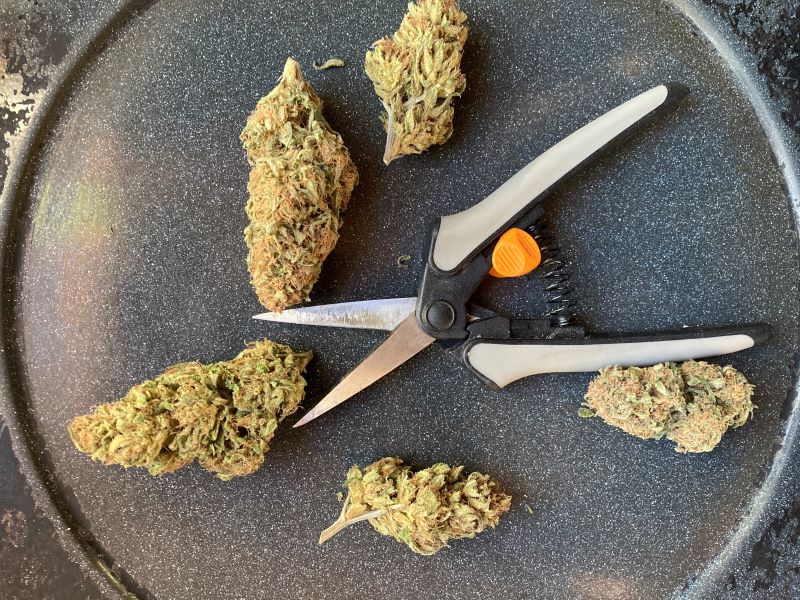
Trimmed Hemp Flower: Crop or Processed Product?
Cultivating and processing hemp for the trim flower market is a growing trend in Vermont. The Vermont Hemp Program takes this opportunity to review programmatic requirements, as registrants shift focus towards producing this valued-added hemp product. We will discuss registration, analytical testing requirements, and share a helpful distinction.
Registration
The Vermont Hemp Program considers trimming hemp flower a processing activity that requires a processor registration. Common activities, in addition to trimming flower, that necessitate a processor registration include but are not limited to, the creation of pre-rolls, manicuring, and packaging loose trimmed flower. Using the Hemp Program’s registration and compliance portal, applicants can easily register as both a grower and a processor on a single application. The fee to register as both a grower and processor is tiered and “is the greater of the number of acres planted or the dry weight of the hemp crop or viable seed processed annually.” [6 V.S.A. §570]. For example, if you are only trimming what you grow, then there is no additional fee to register as a processor.
Analytical Testing of Trimmed Flower
Trimmed flower is considered a processed product; therefore, each batch must be organized by process lots. A registrant may have multiple process lots that originate from a single harvest lot. Harvested hemp that contains the same variety and is grown in a contiguous area is considered a harvest lot. Harvested hemp / biomass must be organized by harvest lots.
All harvest lots are tested pre-harvest for potency, pesticides (if crop is not certified organic), and heavy metals (if previous land use necessitates, or if soil were not tested prior to planting). A process lot of trimmed flower has additional contaminant testing requirements and associated action limits, which will determine if a process lot must undergo remediation steps to eliminate contaminants. Process lots of trimmed flower are required to be tested for microbiological contaminants, moisture content, pesticides (if not tested pre-harvest), and heavy metals (if not previously tested). These tests on process lots must be completed after processing (trimming) has occurred. Full panel tests done on harvest lots are not sufficient for the purposes of process lot compliance. These requirements are in place to ensure that trimmed flower meets standards that reduce risks for the consumer.
Distinction between Trimming and Bucking
Trimming a crop is when individual flowers are manicured and prepared to be consumed. Trimmed hemp flower is a value-added processed hemp product.
Bucking a crop for a biomass preparation is not considered “trimming”, and does not necessitate a processor registration. Bucking is the common process of separating floral material from stems using mechanical methods, or by hand.
For more information about the testing requirements and contaminant action limits, please visit: https://agriculture.vermont.gov/public-health-agricultural-resource-management-division/hemp-program/hemp-potency-and-contaminant.
For more information about registration fees, please visit: https://legislature.vermont.gov/statutes/section/06/034/00570
Questions about the requirements for trimmed flower crops can be directed to Hemp Program Inspector, Mike DiTomasso: Michael.ditomasso@vermont.gov (802) 505-3726, or Cannabis Quality Control Program Compliance Specialist, Bob Shipman: Robert.shipmant@vermont.gov (802) 522-5169
